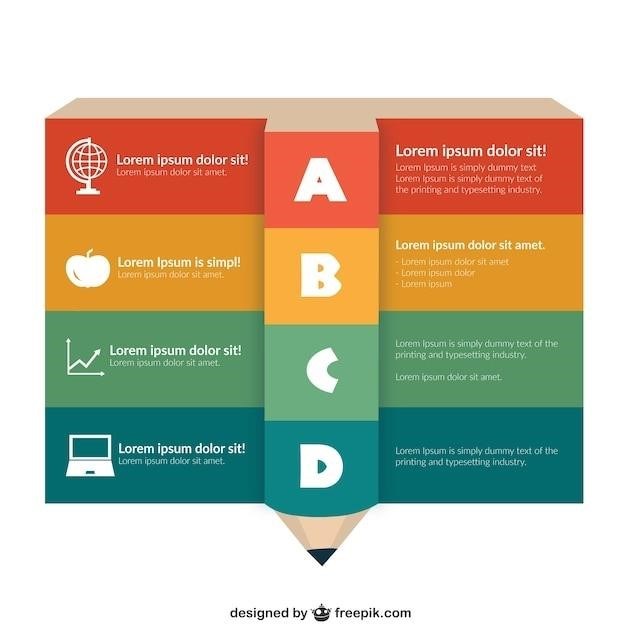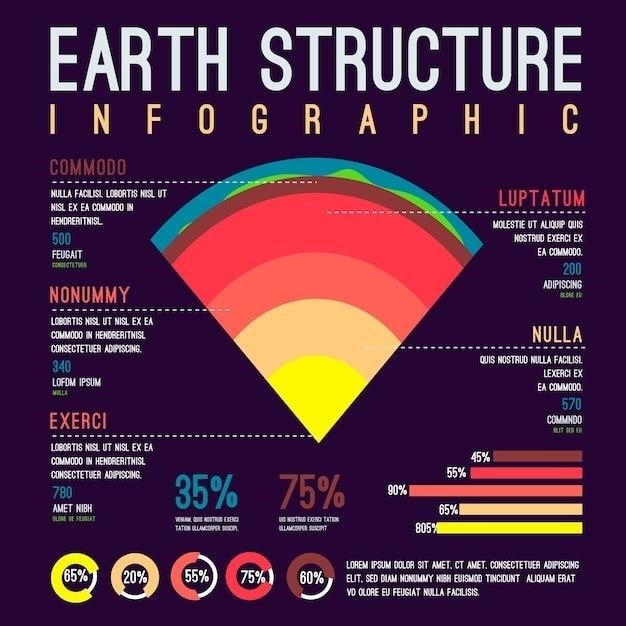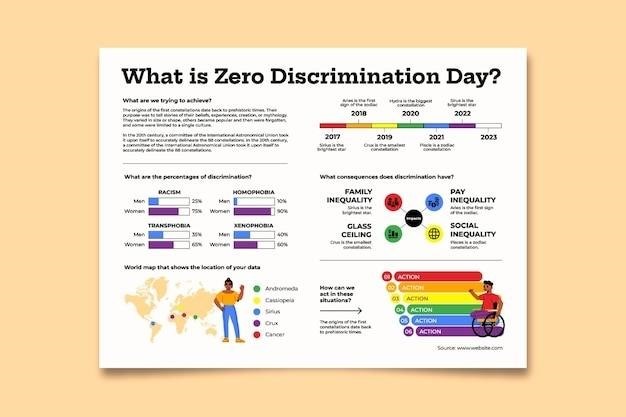Understanding DISC Assessment
The DISC Assessment is a behavioral assessment tool that identifies an individual’s dominant behavioral style based on four key factors⁚ Dominance, Influence, Steadiness, and Conscientiousness. It is a valuable tool for understanding how people interact with the world around them and for improving communication, teamwork, and leadership skills.
What is DISC Assessment?
The DISC Assessment is a popular behavioral assessment tool that helps individuals understand their primary behavioral style and how they interact with others; Based on the work of psychologist William Moulton Marston, it categorizes individuals into four distinct behavioral styles⁚ Dominance, Influence, Steadiness, and Conscientiousness. The assessment utilizes a simple questionnaire, often presented in a PDF format, to measure an individual’s tendencies in these four areas.
The DISC Assessment is used in various settings, including personal development, team building, leadership development, and career planning. It can provide valuable insights into an individual’s strengths, weaknesses, communication style, and overall behavioral patterns.
Purpose of DISC Assessment
The DISC Assessment serves a variety of purposes, aiming to provide valuable insights into individual behavior and how it impacts interactions with others. Its primary objective is to help individuals understand their own behavioral style and how it influences their communication, problem-solving, and decision-making processes. It can also be used to improve relationships, enhance teamwork, and optimize leadership effectiveness.
Organizations often utilize the DISC Assessment for team building activities, leadership development programs, and employee training. It can help identify individual strengths and weaknesses, leading to better communication, reduced conflict, and improved collaboration within teams.
How DISC Assessment Works
The DISC Assessment typically involves completing a questionnaire or survey, which presents a series of statements or questions about behavior and preferences. Participants are asked to select the response that best reflects their typical behavior or how they usually approach different situations. The questionnaire items are designed to measure the four DISC factors⁚ Dominance, Influence, Steadiness, and Conscientiousness.
Once the questionnaire is completed, the responses are analyzed using a scoring system that assigns a numerical value to each factor. The resulting scores are then plotted on a graph or profile, providing a visual representation of the individual’s dominant behavioral style. The profile can be used to identify strengths, weaknesses, and potential areas for improvement in communication, teamwork, and leadership.

DISC Assessment in Practice
The DISC Assessment finds practical applications in various settings, including business, education, and personal development.
Types of DISC Assessments
There are various types of DISC Assessments available, each with its unique format and focus. Some popular types include⁚
- Traditional DISC Assessments⁚ These are the most common types, typically consisting of questionnaires that ask individuals to rate their preferences in various situations.
- Behavioral Style Assessments⁚ These assessments go beyond traditional DISC by exploring a wider range of behavioral styles, including those related to conflict resolution, decision-making, and communication.
- Team DISC Assessments⁚ Designed specifically for teams, these assessments analyze the individual DISC styles of team members to identify strengths, weaknesses, and potential areas for improvement.
- 360-Degree DISC Assessments⁚ These assessments gather feedback from multiple sources, including peers, supervisors, and subordinates, to provide a comprehensive view of an individual’s behavioral style.
The choice of DISC Assessment depends on the specific purpose and context.
Interpreting DISC Assessment Results
Interpreting DISC Assessment results requires careful consideration and understanding of the four behavioral styles⁚ Dominance, Influence, Steadiness, and Conscientiousness. Results are typically presented in a visual format, such as a graph or a circle, with each quadrant representing one of the four styles.
The size of each quadrant indicates the strength of that particular style in an individual’s behavioral profile. For example, a large “Dominance” quadrant suggests that the individual is assertive, direct, and results-oriented. A large “Influence” quadrant indicates that the individual is outgoing, persuasive, and enjoys interacting with others.
It’s important to note that DISC assessments are not about categorizing individuals into rigid boxes. Rather, they provide a framework for understanding individual differences and identifying areas for personal growth and development.
Applying DISC Assessment in Leadership and Team Development
The DISC Assessment plays a crucial role in enhancing leadership effectiveness and fostering successful team dynamics. By understanding the behavioral styles of team members, leaders can tailor their communication and management approaches to maximize individual and team performance. Leaders can leverage DISC insights to delegate tasks effectively, build strong relationships, and foster a positive and productive work environment.
For instance, a leader working with a team member with a high “Dominance” style might emphasize clear goals, direct communication, and opportunities for autonomy. Similarly, a leader working with a team member with a high “Influence” style might focus on positive reinforcement, collaborative decision-making, and opportunities for social interaction.
By utilizing DISC insights, teams can improve communication, resolve conflicts effectively, and work together more cohesively. This, in turn, leads to increased productivity, improved morale, and stronger team performance.
Using DISC Assessment for Personal Growth
The DISC Assessment can be a powerful tool for self-discovery, helping individuals better understand their strengths, weaknesses, and preferred ways of interacting with others.
Self-Awareness and Understanding
By taking a DISC Assessment, individuals gain valuable insights into their own behavioral patterns, preferences, and motivations. This self-awareness allows them to identify their strengths and areas for growth. For example, someone with a high “D” score might realize they are naturally assertive and direct, while someone with a high “S” score might understand their preference for stability and collaboration. This understanding can help individuals make more informed decisions in various aspects of their lives, from personal relationships to career choices.
Knowing their DISC profile can also help individuals better understand their reactions to different situations and people. This knowledge empowers them to manage their emotions and behaviors more effectively, leading to improved self-control and reduced stress. By understanding their own style, they can also identify situations where their behavior might be perceived negatively and adjust their approach accordingly.
Improving Communication and Relationships
Understanding DISC styles can significantly improve communication and relationships. By knowing their own and others’ behavioral preferences, individuals can tailor their communication approach for better understanding and connection. For instance, someone with a high “I” score might need to be more direct and specific when communicating with someone who prefers a more analytical and data-driven approach (high “C”).
The DISC Assessment can also help individuals navigate interpersonal conflicts more effectively. By recognizing the underlying behavioral styles involved in a conflict, individuals can choose more appropriate communication strategies and de-escalate tensions. This understanding allows for more empathy and constructive dialogue, leading to more positive and productive resolutions.
Moreover, the DISC Assessment can be a valuable tool for building stronger teams and fostering a more collaborative work environment. By understanding each team member’s behavioral preferences, individuals can work together more effectively, leveraging their strengths and minimizing potential conflicts.
Career Planning and Development
The DISC Assessment can play a pivotal role in career planning and development. By understanding their dominant behavioral style, individuals can identify career paths that align with their strengths and preferences. For instance, someone with a high “D” score might thrive in a leadership role requiring assertiveness and decisiveness, while someone with a high “S” score might excel in a supportive and collaborative environment.
The DISC Assessment can also help individuals identify areas for personal and professional development. For example, someone with a high “I” score might benefit from developing their ability to focus on details and follow through on tasks, while someone with a high “C” score might need to work on their ability to express their opinions and ideas more confidently.
Furthermore, the DISC Assessment can be used to create more effective and fulfilling work environments. By understanding the behavioral preferences of their employees, employers can assign roles and responsibilities that match their strengths and provide opportunities for growth and development aligned with their individual needs.

Resources for DISC Assessment
Many resources are available for those interested in learning more about DISC Assessment, including online tools, books, and professional providers.
Online DISC Assessment Tools
Numerous online platforms offer DISC assessments, providing individuals and organizations with convenient access to this valuable tool. These platforms typically involve completing a questionnaire that explores your behavioral preferences and tendencies. Once completed, the platform generates a personalized report outlining your dominant DISC style and its implications. Some popular online DISC Assessment tools include⁚
- The DISCstyles Assessment⁚ This comprehensive assessment examines external and easily observable behaviors, measuring tendencies using scales of directness and openness that each style exhibits.
- The UnifyDrive UT2⁚ This pocket-sized device combines the functionality of a portable SSD and a network-attached storage device, offering versatile storage solutions for both home and professional use.
- Mindomo⁚ This dedicated mind mapping software platform provides a free version that allows users to create up to 40 mind maps, offering basic features for organizing ideas and information.
When choosing an online DISC Assessment tool, it’s essential to consider factors such as the platform’s reliability, the comprehensiveness of the report, and the level of support provided.
Books and Articles on DISC Assessment
For a deeper understanding of DISC Assessment and its applications, exploring books and articles dedicated to this topic can be immensely valuable. These resources provide detailed explanations of the DISC model, its origins, and its practical applications in various contexts. They often offer insights into interpreting DISC profiles, understanding the nuances of different behavioral styles, and effectively applying this knowledge to enhance communication, teamwork, and leadership.
Some notable books and articles on DISC Assessment include⁚
- “The DISC Profile⁚ A Guide to Understanding Yourself and Others” by John Geier⁚ This comprehensive guide offers a detailed exploration of the DISC model, providing practical insights into how to use DISC to improve communication, relationships, and leadership skills.
- “The DISC Assessment⁚ A Practical Guide to Understanding Your Behavior” by Dr. William Marston⁚ This book offers a foundational understanding of the DISC model, exploring its origins and providing practical guidance for applying DISC in various settings.
- “The DISC Advantage⁚ The Complete Guide to Using the DISC Assessment for Success in Business and Life” by Patrick M. Lencioni⁚ This book provides a practical framework for using DISC to enhance communication, teamwork, and leadership in a business context.
By delving into these resources, individuals and organizations can gain a comprehensive understanding of DISC Assessment and its potential to improve communication, collaboration, and overall performance.
Professional DISC Assessment Providers
For those seeking a more in-depth and comprehensive understanding of DISC Assessment, engaging with professional providers can offer valuable insights and support. These providers are experts in the DISC model and its applications, offering a range of services that can help individuals and organizations leverage the power of DISC for personal and professional growth.
Professional DISC Assessment providers typically offer the following services⁚
- Certified DISC Assessments⁚ These providers offer validated and reliable DISC assessments that adhere to industry standards and ensure accurate and insightful results.
- Individual and Team Coaching⁚ They provide personalized coaching sessions that help individuals interpret their DISC profiles and develop strategies for improving communication, teamwork, and leadership skills.
- Organizational Development Programs⁚ They design and deliver customized programs that utilize DISC to enhance team dynamics, improve communication, and foster a more productive and collaborative work environment.
- Training and Development⁚ They offer training programs that educate individuals and teams on the fundamentals of DISC Assessment, its applications, and its benefits in various contexts.
By collaborating with professional DISC Assessment providers, individuals and organizations can access expert guidance and tailored support to maximize the benefits of DISC Assessment and achieve desired outcomes.
DISC Assessment is a versatile tool that can provide valuable insights into individual behavior and enhance communication, teamwork, and leadership skills.
Benefits of Using DISC Assessment
The DISC assessment offers a range of benefits for individuals, teams, and organizations; It provides a framework for understanding individual behavioral styles, fostering more effective communication and collaboration. By identifying strengths and weaknesses, individuals can enhance self-awareness, leading to personal growth and improved performance.
In team settings, DISC assessment facilitates a deeper understanding of team dynamics, promoting a more harmonious and productive work environment. It empowers teams to leverage individual strengths and address potential conflicts. For organizations, DISC assessment enables effective talent management, by identifying suitable candidates for specific roles and fostering leadership development.
Ultimately, DISC assessment promotes a more positive and productive work culture by fostering empathy, understanding, and collaboration among individuals and teams.
Limitations of DISC Assessment
While the DISC assessment offers valuable insights into behavioral styles, it’s crucial to acknowledge its limitations. It’s important to recognize that the assessment focuses on observable behaviors, not underlying personality traits, and may not capture the complexity of an individual’s personality.
The DISC model is a simplified framework, and individuals can exhibit behaviors that fall outside the defined categories. Additionally, the assessment relies on self-reporting, which can be influenced by factors such as social desirability bias, leading to potentially inaccurate results. It’s also important to note that the DISC assessment is not a diagnostic tool and should not be used to diagnose mental health conditions;
For these reasons, it’s essential to interpret DISC assessment results with caution and consider them as a starting point for further exploration and development.
Future of DISC Assessment
The DISC assessment continues to evolve and adapt to the changing landscape of the workplace. With the increasing emphasis on remote work and virtual teams, the need for effective communication and collaboration tools is more critical than ever. The DISC assessment’s ability to provide insights into communication styles and preferences makes it a valuable resource for building high-performing teams in a diverse and distributed environment.
The integration of technology is also shaping the future of DISC assessment. Online platforms and mobile applications are making it easier than ever to administer and interpret the assessment. This accessibility is driving wider adoption across various industries and organizational levels. As artificial intelligence (AI) and machine learning (ML) continue to advance, we can expect to see more sophisticated and personalized DISC assessments that offer even deeper insights into individual behaviors and potential.
